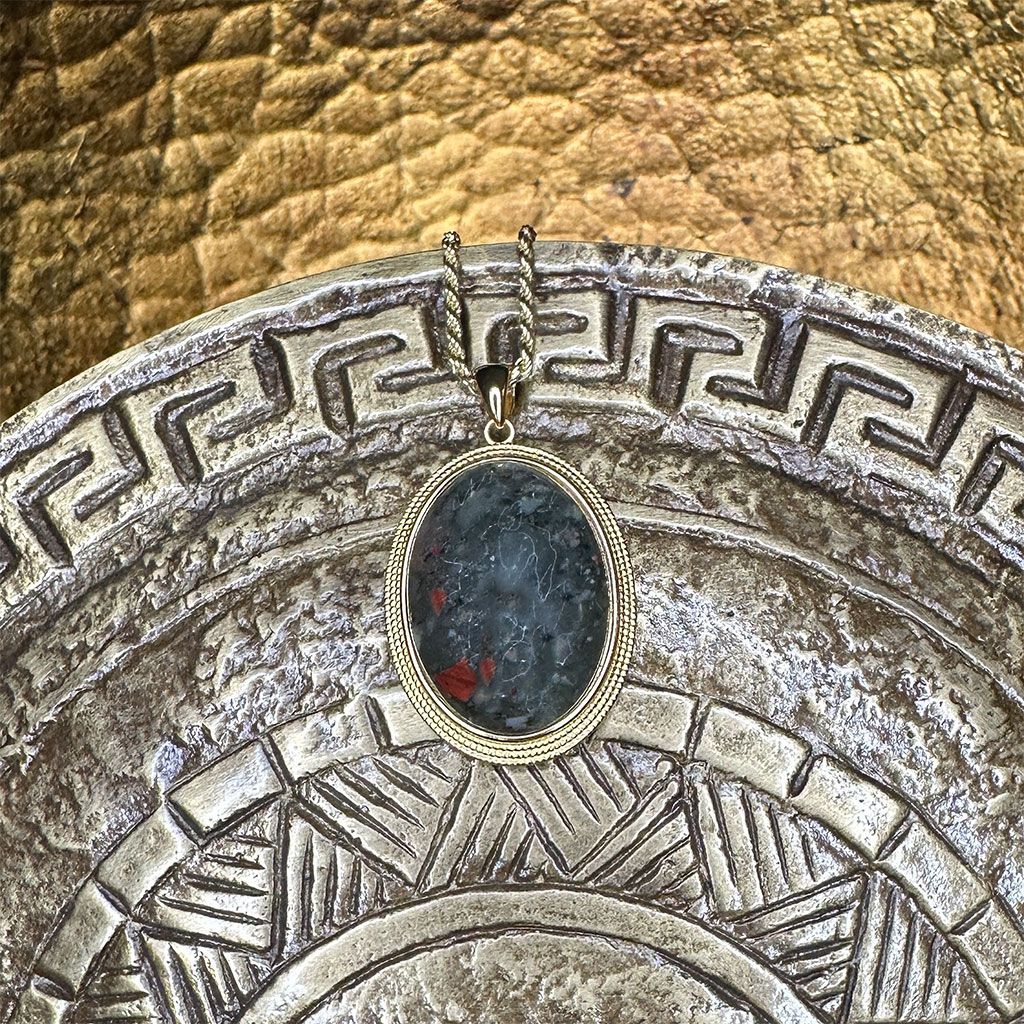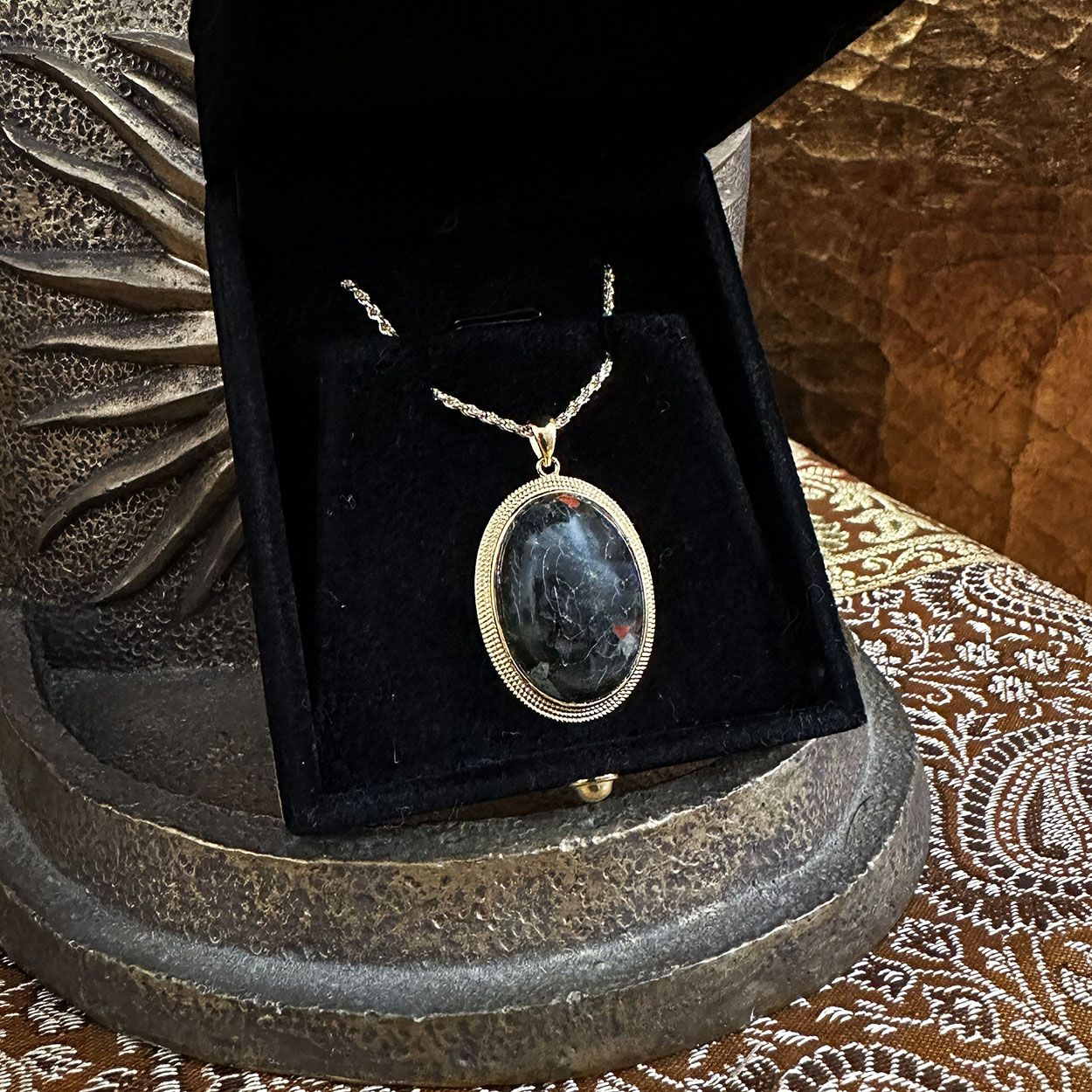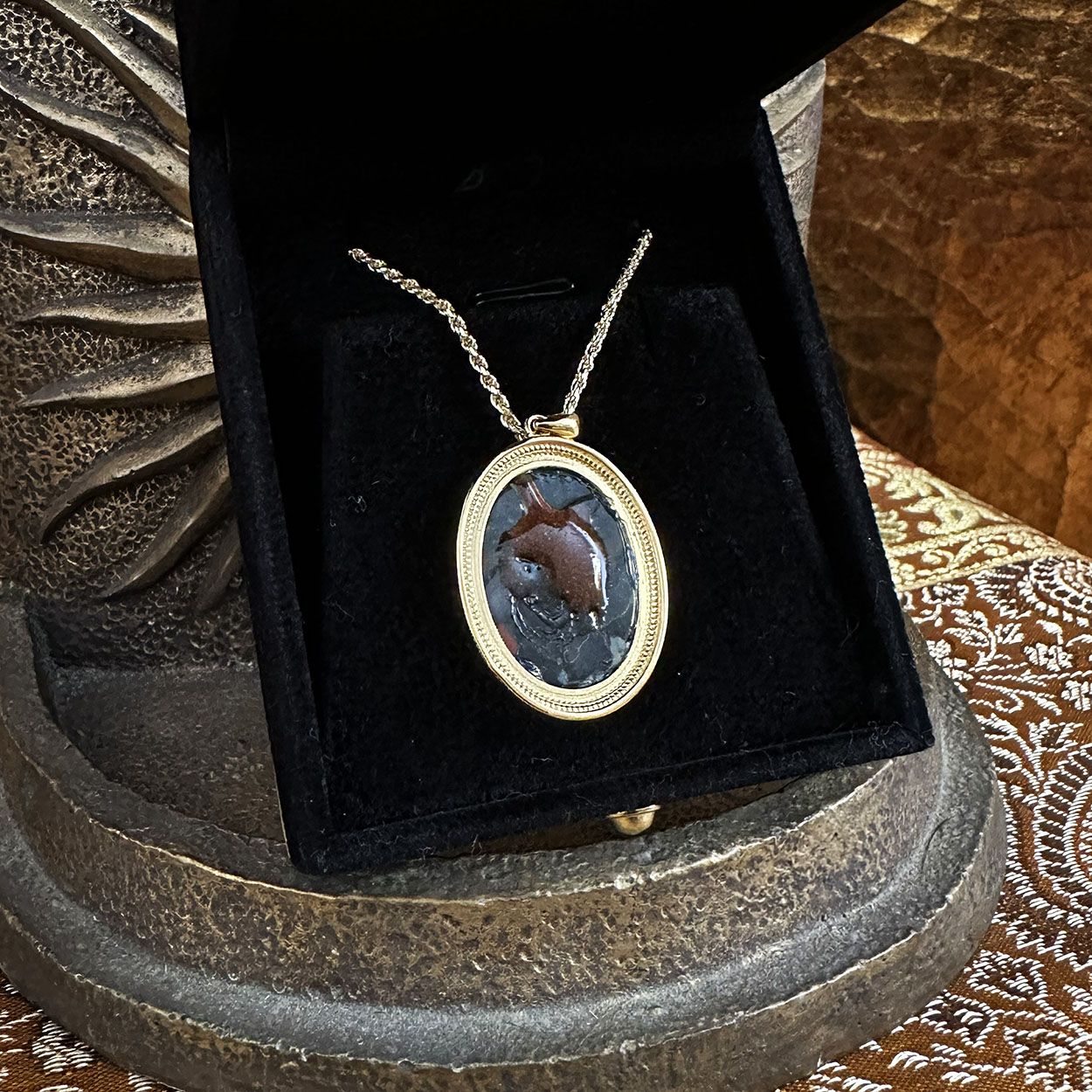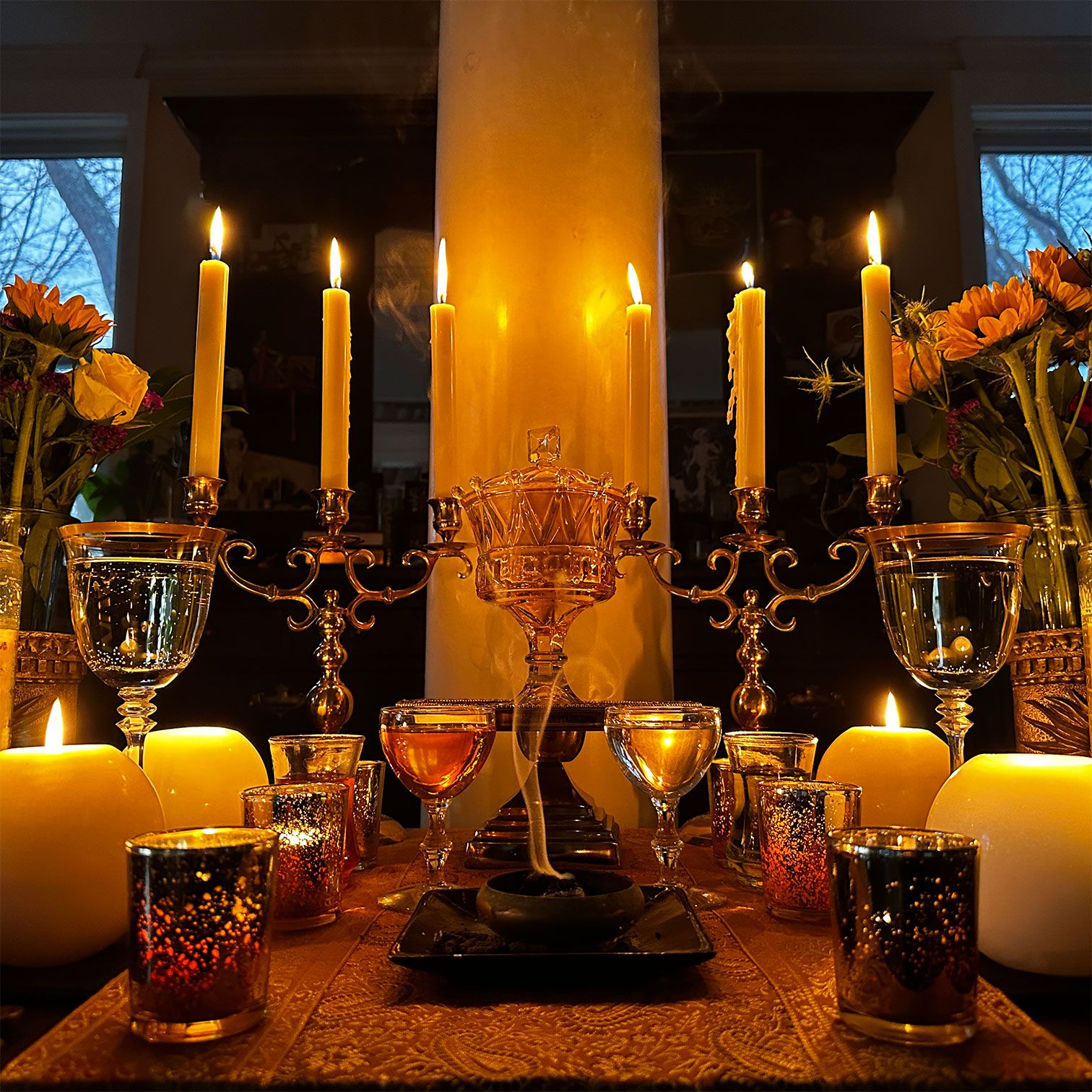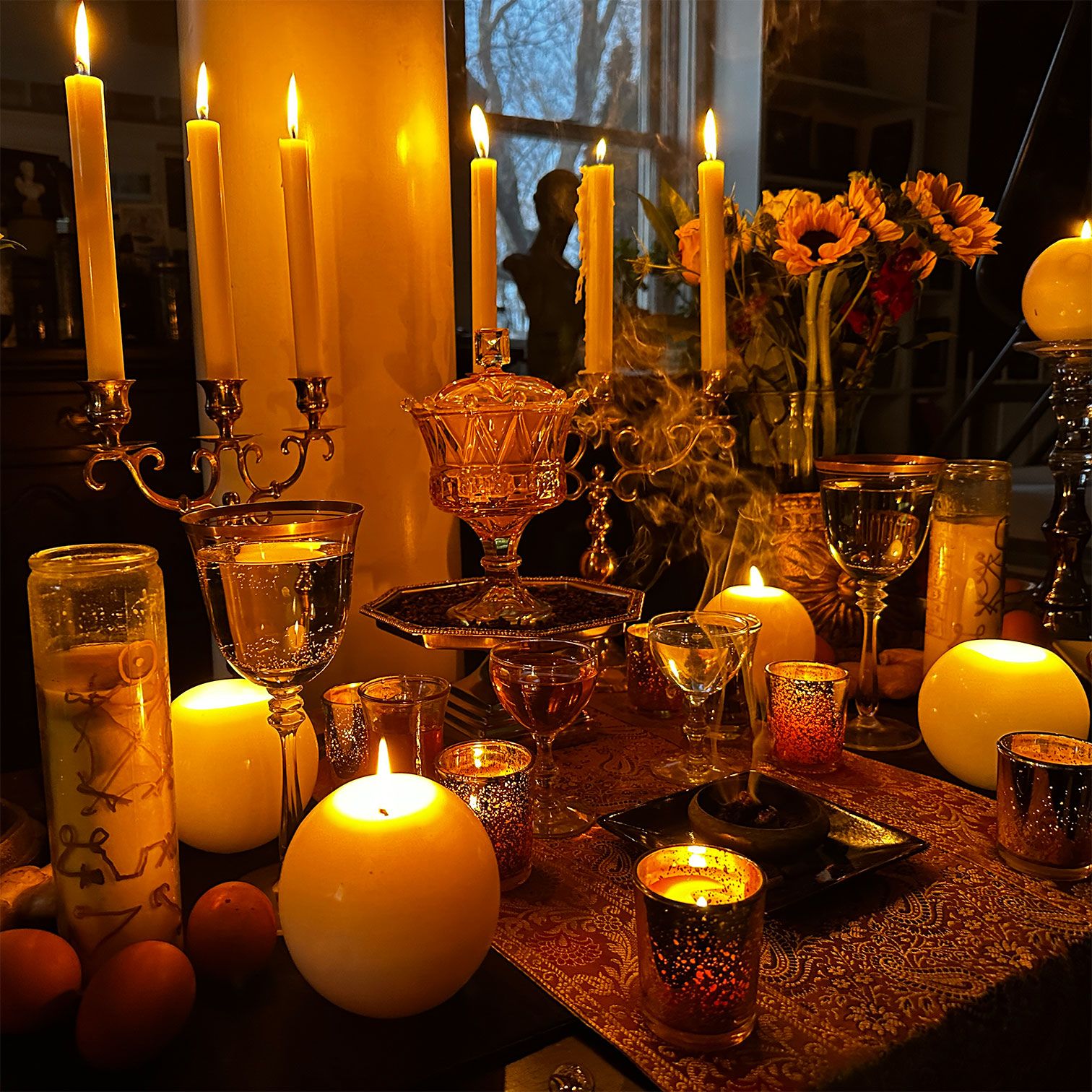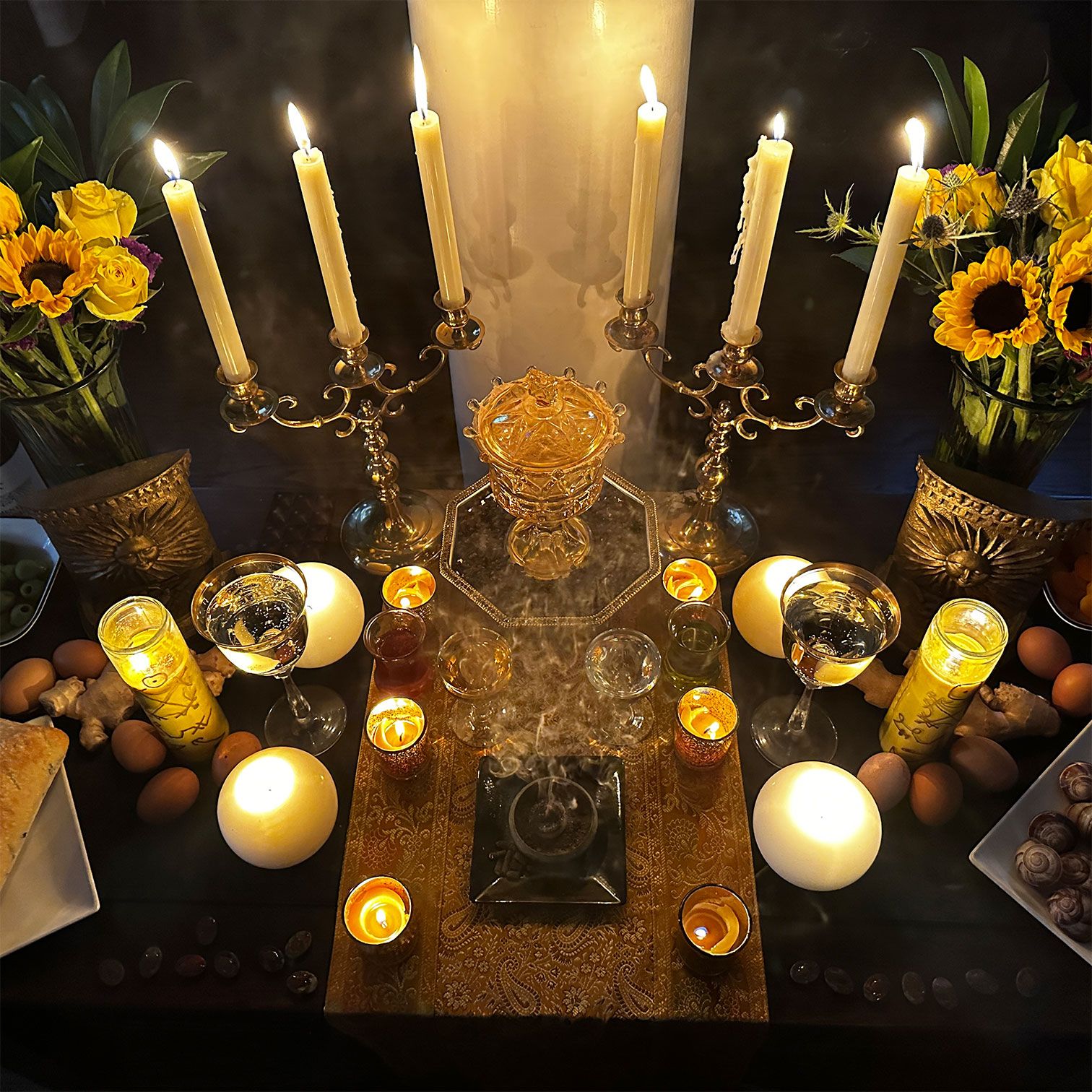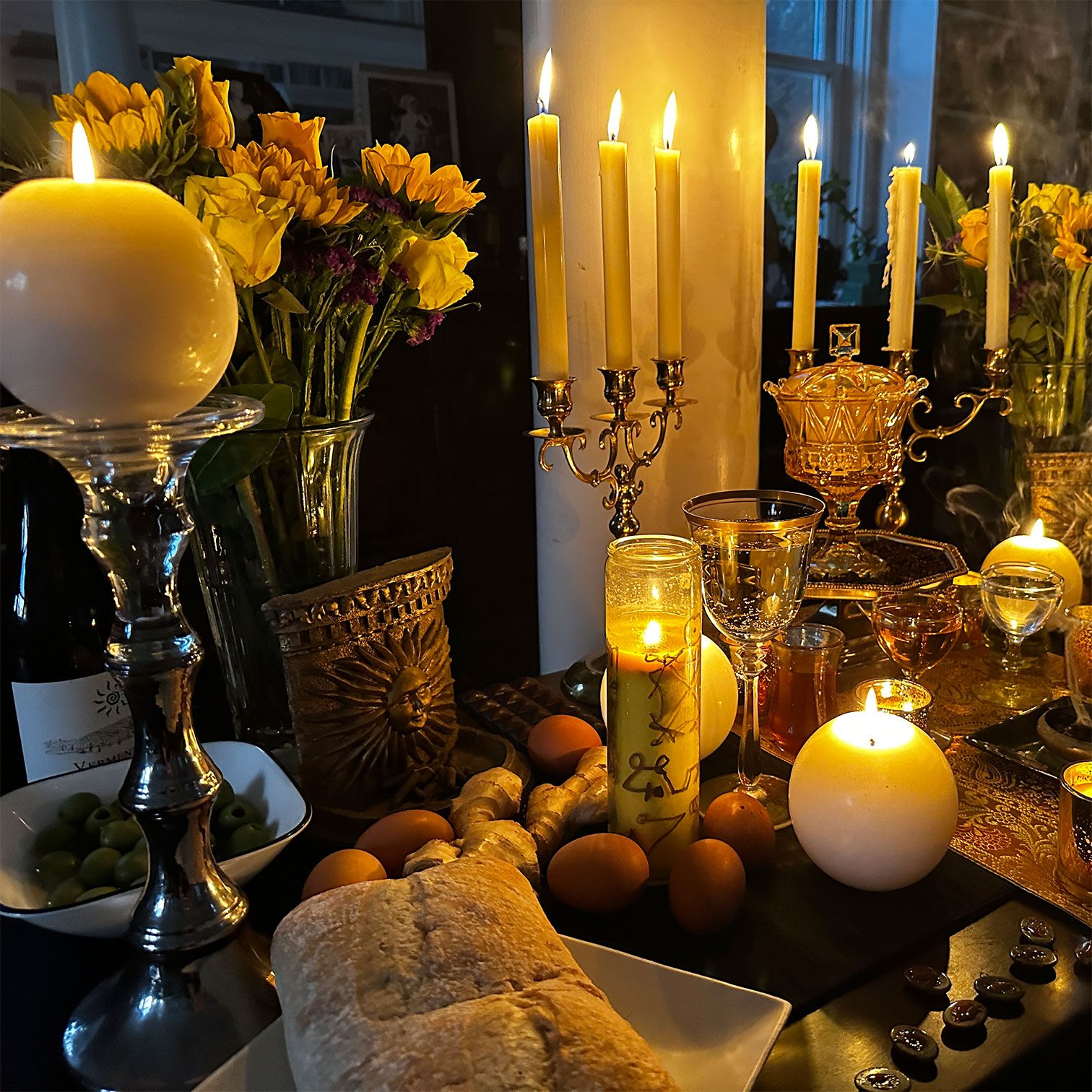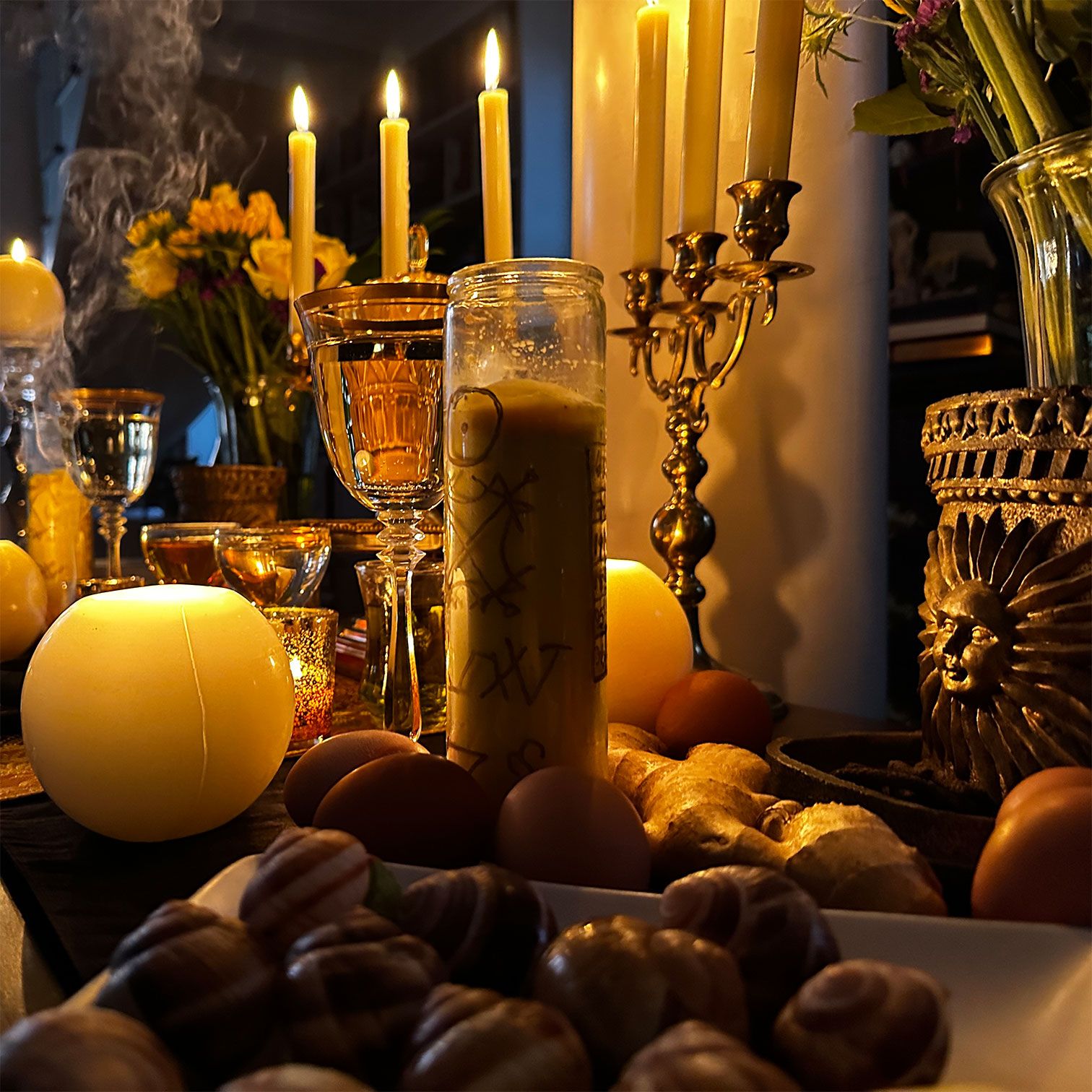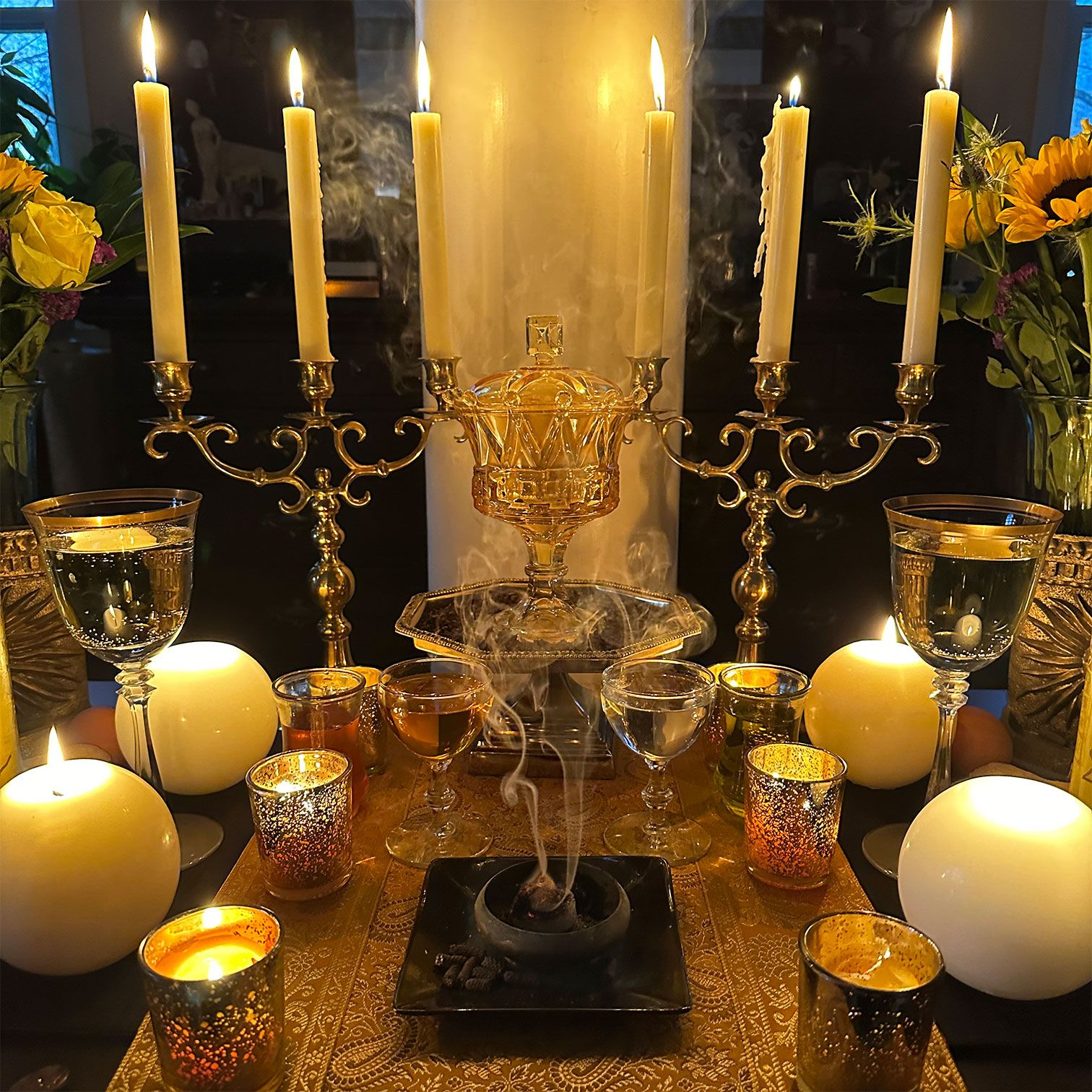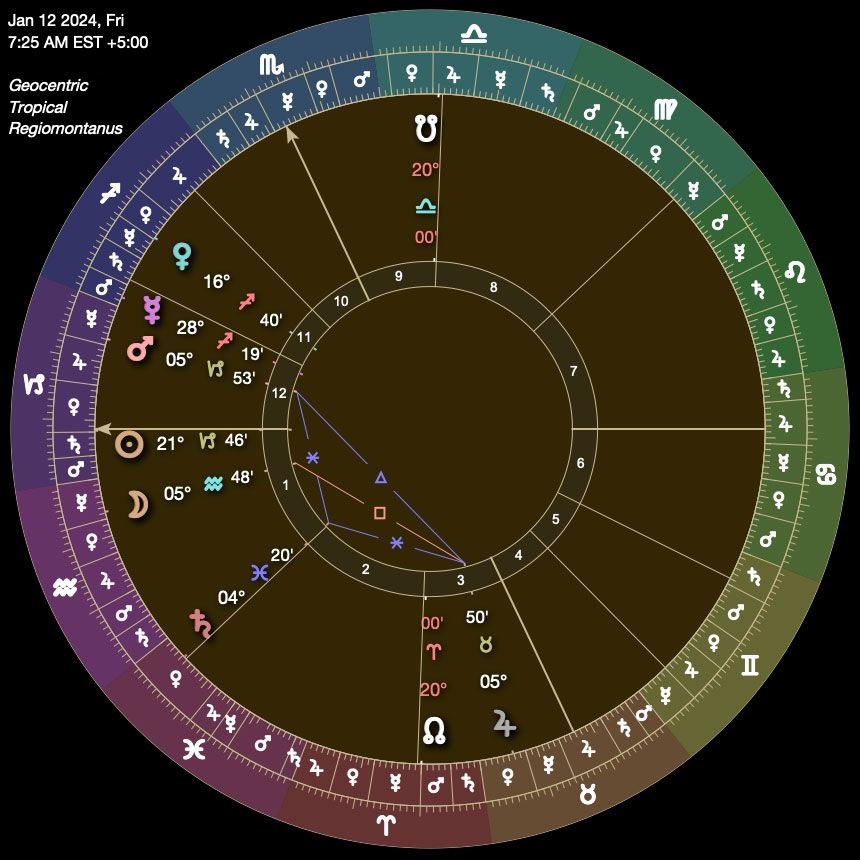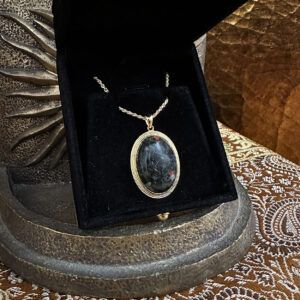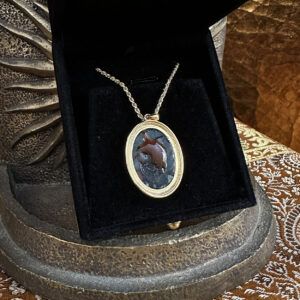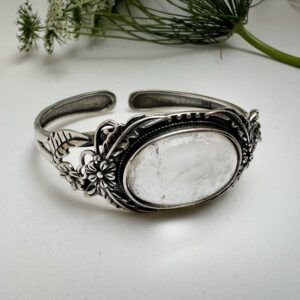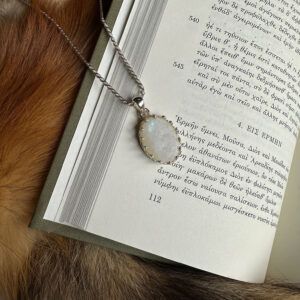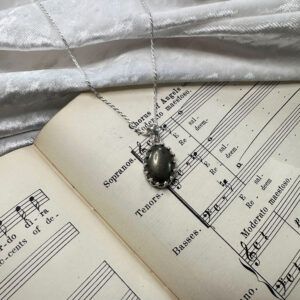Your cart is currently empty!
Sun in Capricorn III Decan: Terra’s Throne – Bloodstone Pendant Talismans
$375.00
See “Description” tab below for full discussion of the Terra’s Throne talismans.
These bloodstone third decan of Capricorn talismans were created with the intent of granting material stability according to the description of Picatrix, which says: “This is a face of wealth and the accumulation of money and increase and embarking on trade and pressing on to a good end” (Book II, Chapter 11).
We most readily recommend this talisman to people who either have experience with talismanic spirits or who are reasonably adept at negotiating and setting boundaries with spirits.
Note: Since natural gemstones are endowed with significant variations, the talisman pictured is not necessarily the one you will receive should you elect to purchase one.
Ensouled on Friday, January 12, 2024 between 7:08am and 7:26am EST.
In stock
Description
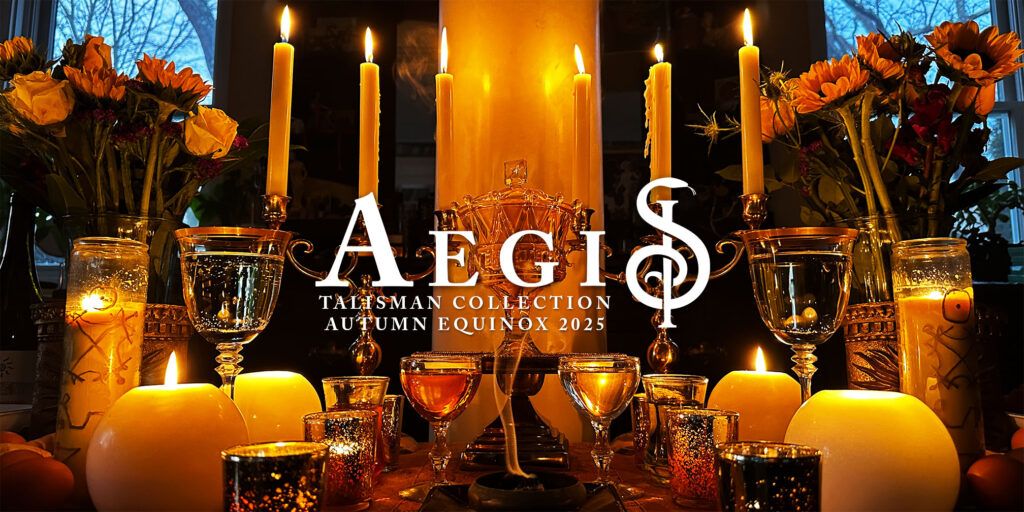
Part I: The Decans
In Plato’s Timaeus, easily one of the most influential books in history, the planets and stars are named as the gods and their movements defined as time:
“As for the other stars, humans have not taken note of their circuits (except for a few out of the many), nor do they give them names, nor take exact relative measurements and look at them by means of numbers, so that people scarcely know at all that the ‘wanderings’ of these bodies—baffling in their multitude yet wondrously embroidered—are time.”
—Plato, Timaeus, trans. Peter Kalkavage (Hackett Publishing, 2016), 39C-D.
Many hundreds of years before Plato was even born, however, the Egyptians were using the decans to tell time—since at least the 21st century BC, when they are first attested in the archaeological record in Egyptian burial chambers carved into coffin lids.
“Each sign is divided into three parts, and each part has one decan, so that in each sign there are three decans, each having ten degrees out of the thirty, and over those ten degrees it exercises its power and control. They have infinite power and freedom in indicating the fates of men.”
—Firmicus Maternus, Matheseos Libri VIII, tr. Jean Rhys Bram, Book II, Chapter IV
In the Greek, Firmicus Maternus refers to the decans as litourgoi and notes that under each of them are nine munifices, words that mean something like ministers and officers. This and many other texts such as the Gnostic Pistis Sophia and the Corpus Hermeticum attests to a view common in late antiquity that the decans were or corresponded to powerful spirits or daimones (for a full discussion, see Dorian Gieseler Greenbaum’s The Daimon in Hellenistic Astrology). In earlier Egyptian lore, they corresponded to deities.
In short, the decans are haunted. The decans, as living time, administer fate through their powers and subordinate spirits. The deities and daimones of heaven were often viewed with circumspection and even fear, and it comes as no surprise that the decans have been strongly associated with sublunary misfortune. Firmicus Maternus noted that by the powers of the decans “are decreed sudden accidents, pains, sicknesses, chills, fevers, and everything that happens unexpectedly” (ibid), and the Stobaean Fragments say that the decans “cause destructions of other ensouled animals and they cause the swarms of animals that decimate harvests” (Hermetica II, tr. M. David Litwa, SH 6).
The images of the decans, on the other hand, often phantasmagoric and strange, have been attested over millennia to reverse such foul fortune. The 36 decanic amulets in the Sacred Book of Hermes to Asclepius, for example, are each held to repair or protect an aspect of the human body.
Although the decanic lore stretches back entirely beyond the existence of horoscopic astrology, they do not possess the same narrative lore of the planets, the fixed stars, or the constellations. If these spirits possessed personal mythologies, they are buried like countless other secrets in the sands of Egypt (and possibly elsewhere), alive only through all the mysteries and magic we experience by sharing the cosmos with them. Hence for any given decan it is difficult to offer much to dwell on apart from the fragmentary history of images and magical associations that have been handed down.
It seems possible, though, that rather than thinking their stories are mysteries lost to time, something else might be going on. Stories can be lost to time: time itself can’t be lost, or contained. Time does the finding (and the losing); time does the containing. We might think of the decans more like numbers, or colors. The number three does not have a personal story; there are no myths about the color green. Stories involve triads, and elements in mythologies might be green, but these basic qualities themselves are in some sense beyond—or before—stories. They are constituent parts.
Perhaps the decans, too, are so remote, so foundational, so elementally woven into the cosmos, that they exist somewhat apart from our stories and our conceptual grasp. Like the molecules and atoms in our hands, we can’t grasp them: we grasp with them.
Part II: The Third Decan of Capricorn
Perhaps due to their age, perhaps due to more esoteric considerations (see Picatrix Book II, Chapter 11, for example), the decans are considered by some to be even more powerful or in a higher order than the fixed stars. Though the theme of sovereignty arises with respect to several fixed stars and planets—Regulus, the Sun, Jupiter, etc.—we can always inquire into the foundations of sovereignty. Heavy is the head that wears the crown, yes, but not heavier than the voluminous throne on which the sovereign sits.
The third decan of Capricorn has been known by many names. Liber Hermetis dubs them Marxois. Other names include Epikhaus, Tepkhsn, Topismoth, Isro, Omot, Seros, Homoth, Monuphta, Saui-srt. Ancient spirits have many titles, many epithets, many modes of address now scattered amongst the dead.
According to the descending Chaldean order of planetary decan rulership, the Sun is associated with the third decan of Capricorn. Sol in Saturn’s sign of Capricorn, in part of the sign that contains the degree of exaltation of Mars, naturally lends itself to metaphors of sovereignty, power, control, and particularly these qualities obtained and maintained through wealth and business.
The images of Capricorn III reinforce these associations. Picatrix lists the image of this decan as:
“A man holding a book and opening and closing it, and having before the book the tail of a fish. This is a face of wealth and the accumulation of money and increase and embarking on trade and pressing on to a good end.”
—Maslama al-Qurtubi, Picatrix, tr. Greer & Warnock, Book II, Chapter 11
Agrippa has the image as the following:
“In the third face [of Capricorn] rises a woman chaste in body and wise in her work, and a banker gathering money on a table; this [image] is the significator for prudent government and for ambitious and greedy substances.”
—Heinrich Cornelius Agrippa, Three Books of Occult Philosophy, tr. Eric Purdue, Book II, Chapter 37
Consistent with the suggestions above that the decans form a kind of basic cosmic substrate, these associations draw us not so much to the sovereign as to the material substrate that supports the sovereignty. Accordingly, Austin Coppock gave this decan the sobriquet “The Throne” in his much lauded (and now infamous esoteric collector’s item) 36 Faces. Emphasizing the ancient rootedness of this decan and the elemental qualities of its sign, we have called these talismans Terra’s Throne.
Agrippa’s invocation of greed and al-Qurtubi’s embellishment of wealth with “the accumulation of money” clues the careful reader into the shadowy aspects of this decan. Of the four planets that can be associated in some way with this decan (Sol and Saturn, Mercury and Mars), only Sol has a reputation for generosity. Without prudence and temperance, those influenced by this decan risk becoming ruthless and avaricious. Many kingdoms have, after all, ever sought to expand their borders and pad their coffers at the expense of others and even their own citizens.
We therefore most readily recommend these talismans to those with robust spirit ecosystems that might soften the drive of this decanic spirit and help to maintain right relationship and a sense of how much is enough.
Technical Details
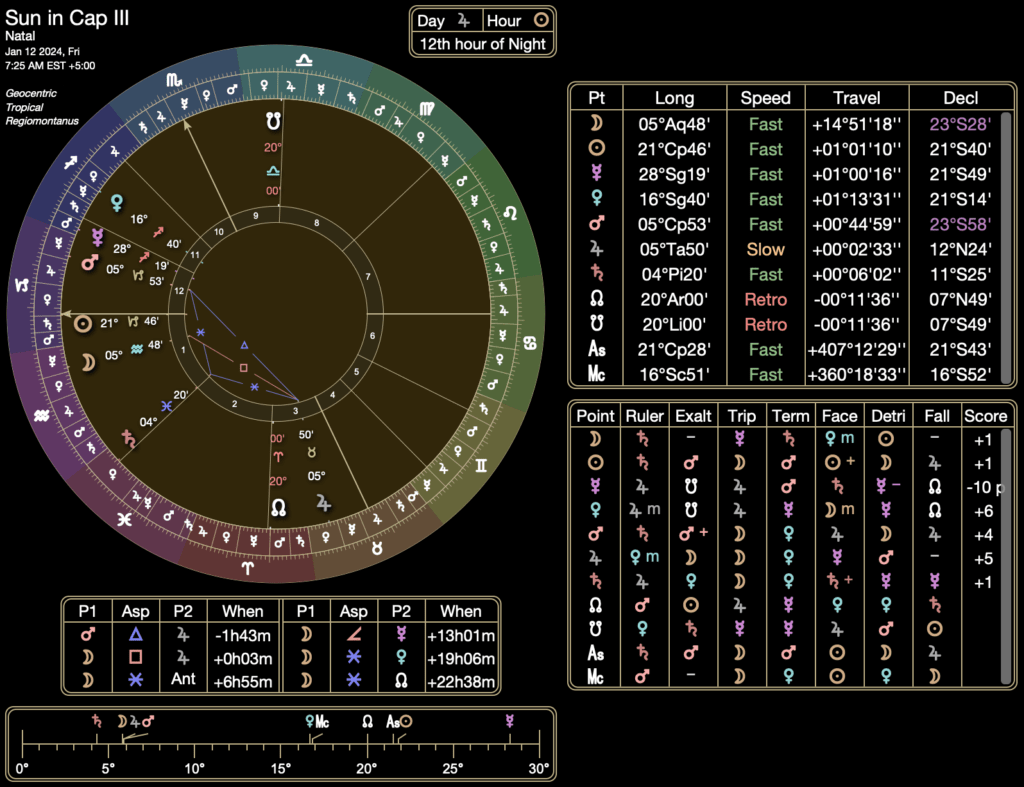
The Terra’s Throne 3rd decan of Capricorn talismans were ensouled on Friday, January 12, 2024 between 7:08am and 7:26am EST.
Essential Features of the Election
In the Picatrix, Maslama al-Qurtubi explains the core electional requirements of decanic talismans as follows:
“When you make any of images of the faces described above…make the image when the corresponding planet is present in that face, then that work will be perfect and it will manifest in the world. If it happens that the Sun is rising in the hour of the planet or combines its force with it in a way that you desire, the work will be stable and strong.”
For decan talismanic elections, we require that the significator planet be present in its face. In this election, the Sun—considered the ruler of Capricorn III according to the descending Chaldean order rulership scheme—was in his face in the 3rd decan of Capricorn.
Decan elections also require the Sun to be rising in the hour of the significator or otherwise “combin[ing] its force with it.” In this election, the working was completed while the Sun was rising on the Ascendant during Sun hour.
In all elections, we also require the Moon and the Lord of the Ascendant to be in sufficiently good condition. In this election, Luna in Aquarius was moving with fast speed and applying by partile square to Jupiter in Taurus and making a wide sextile to Venus in Sagittarius. Saturn, the Lord of the Ascendant, was in adequate condition, peregrine in Pisces and separating from a sextile to Mars.
Further Magical Factors of the Election
We note that Saturn, the Lord of the Ascendant and the ruler of the Sun’s sign was very closely conjunct the Persian Royal Star Fomalhaut during this election, fortunating this influential planet of the election.
Reflection on Weaknesses of the Election
Although the Moon’s ruler, Jupiter, has adequate essential dignity and is closely connected via square aspect to the Moon, we do note that Mars is also in very close trine aspect to Jupiter, only separating by minutes. Some have theorized that the Moon has less influence in Solar and/or Decan elections since the main luminary in these elections is the Sun, but we take seriously Maslama al-Qurtubi’s injunction that “You should pay attention to the Moon in all workings” (Picatrix, Book II, Chapter 3, emphasis added), and we thus note that this election is not free from malefic influence.
Recommendations
Decan talismans are more rare and esoteric compared to planetary and even fixed star talismans. We therefore recommend that adopters of these talismans have some fluency with spirit work and preferably with talismanic relationships.
Ceremonial Details
Gemstone and Talismanic Image
The lore of the decans is fragmentary and inconclusive, and so this was a largely spirit-guided working. Stone and herb were chosen via divination among several options in the solar hierarchy. The cards picked heliotrope, the ancient name for the semiprecious stone known as bloodstone in modern times, a green stone speckled with spots of red. Albertus Magnus says of heliotrope: “it is said to give a man a good reputation, and health, and long life; and to be good against bleeding and [poisons]” (Book of Minerals, tr. Dorothy Wyckoff, p. 89). The Peterborough Lapidary contains the following lore: “whoever bears [this stone] will be of great gain, and he brings in great help for a man, and makes a man to be of great renown” (A Medieval Book of Magical Stones, tr. Francis Young, p. 40).
On the front of the stone was etched the image of the third decan of Capricorn in Book II, Chapter 11 of Picatrix: “a man holding a book and opening and closing it, and having before the book the tail of a fish.” On the obverse was carved the symbol of the Sun and the sigil of the third decan of Capricorn. The herb chosen for this working via divination was cinnamon, an herb attributed to the Sun by Agrippa and William Lilly; ground cinnamon was affixed to the back of each stone during the listed electional window after the carving of the stones.
Ritual Setup
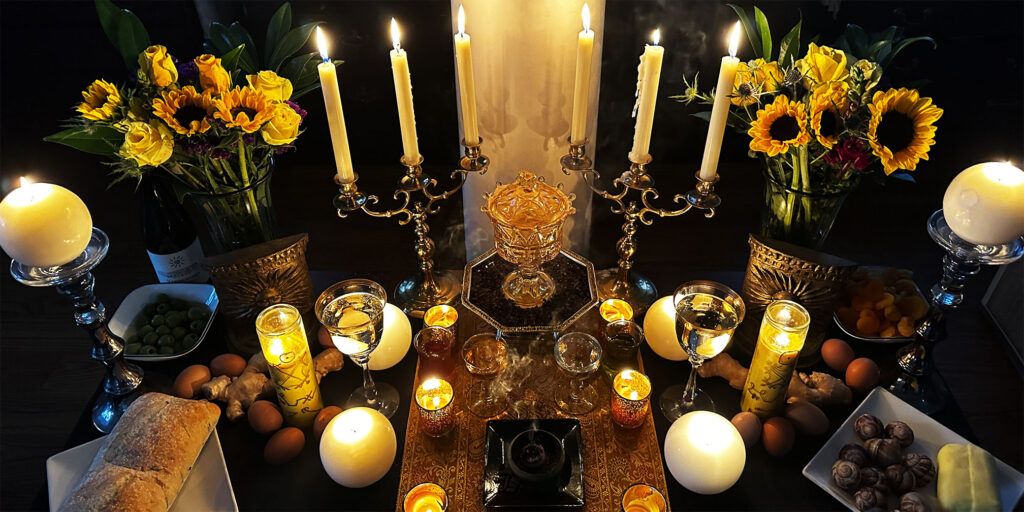
An altar of gold and black, representing Sol’s illumination of the Saturnine darkness of Capricorn, was erected to Marxois prior to the working, decorated with candles lining a golden cloth leading to a symbolic throne of the Sun strewn with cloves, an expensive spice attributed to the Sun by Agrippa and Israel Hibner. Offerings of food, honey, olive oil, wine, solar spirits, and yellow flowers adorned the altar to gather in and harmonize with the Solar decanic rays of the moment.
Suffumigation
According to the Sworn Book of Honorius, the suffumigation of the third decan of Capricorn is “pip longum” aka long pepper. Divination supported a mixture of Sultan’s grade royal Hojari frankincense, long pepper, and the Solar suffumigation incense blend from Picatrix (blended and ritually consecrated during a previous Idola Stellarum Sun in Aries operation) for these talismans.
Additional information
| Weight | 1 lbs |
|---|---|
| Dimensions | 10.5 × 14 × 2 in |
| Type of Talisman | Decan/Face |
| Date of Election | January 12, 2024 |
| Electional Window | 7:08-7:26am EST |
| Talismanic Image | The image of Capricorn III from Picatrix: “A man holding a book and opening and closing it, and having before the book the tail of a fish.” |
| Suffumigation | Long pepper, royal hojari frankincense, and Picatrix Sun incense |
| Herb(s) | Cinnamon |
| Gemstone | Bloodstone |
| Gemstone Origin | Africa |
| Jewelry Type | Pendant |
| Jewelry Setting | Gold plated sterling silver |
| Chain Type | Gold plated sterling silver |

